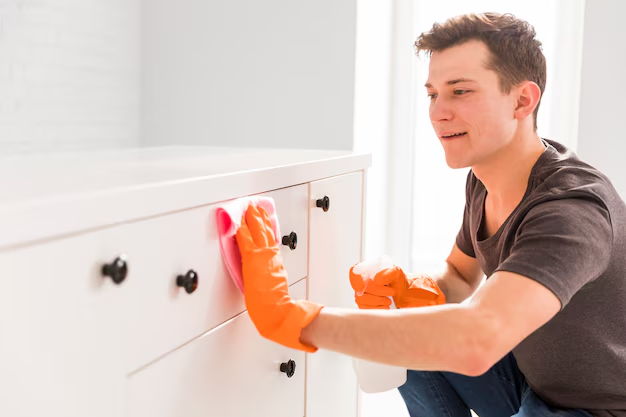Repairing Your Refrigerator Door Handle: A Complete Guide to Home Solutions
Your refrigerator is the quiet workhorse of your kitchen, tirelessly keeping your food fresh and your beverages cold. But when that trusty fridge door handle starts to wobble, stick, or pop off entirely, it can be a small yet significant annoyance in your daily routine. Fear not! Whether you're a DIY enthusiast or someone just looking to save a few bucks rather than calling in a repairperson, this guide will walk you through how to fix a refrigerator door handle. 🛠️
Understanding Your Refrigerator Handle
Before diving into repairs, it's essential to understand the type of handle on your refrigerator. Handles can be mounted externally on the refrigerator door with screws or designed with hidden fasteners for a sleek look. This distinction will guide the tools and approach you use for repairs.
Common Types of Refrigerator Door Handles:
- Screw-Mounted Handles: Secured with visible or discreet screws.
- Integrated Handles: Built into the door structure, often for a seamless look.
- Push-In or Snap-On Handles: Typically use clips or other fittings to stay in place.
Diagnosing the Problem
Identifying the specific issue is the first step. Here are common problems with refrigerator door handles:
- Loose handle: Often due to screws or clips that have come loose or worn out.
- Broken handle: A part of the handle itself is cracked or broken.
- Misaligned handle: Caused by loose screws or improper installation.
- Stuck handle mechanism: An issue in handles with lock or pull mechanisms.
Tools You Might Need
Here are some tools to prepare for fixing your refrigerator door handle:
- Screwdrivers: Both flathead and Phillips are commonly used.
- Allen wrenches: Often needed for hidden or recessed screws.
- Rubber mallet: Handy for adjusting or popping back handles without damaging them.
- Replacement screws or parts: If current ones are stripped or broken.
Step-by-Step Repairs for Common Issues
Fixing a Loose Handle
Locate the screws: Depending on your handle type, these could be visible on the outside or hidden behind caps or in recesses.
Tighten the screws: Use a suitable screwdriver or Allen wrench. Be sure not to overtighten as this can strip the screw or damage plastic components.
For hidden screws: You might need to snap open a cover, which usually requires carefully prying it loose with a flathead screwdriver.
Repairing or Replacing a Broken Handle
Remove the Handle: For screw-mounted handles, simply unscrew them. Snap or push-in handles might require pressing a release tab or gently prying them off.
Inspect for Broken Parts: Often, a single component will be the culprit. Check for cracks or breaks.
Replace Parts: Order a replacement handle or specific parts if necessary. Reattach using the screws or clips as required.
Addressing a Misaligned Handle
Loosen the Screws: Allow the handle some mobility to reposition it accurately.
Align Properly: Make sure the handle sits evenly. This often eliminates operational issues such as difficulty opening the door.
Retighten the Screws: Ensure the handle is stable and even.
Fixing a Stuck Handle Mechanism
Disassemble if Necessary: Some mechanisms may require partial disassembly to access the internals.
Clean and Lubricate: Dust and grime can cause stickiness. Clean with a mild cleaner and apply a food-safe lubricant if needed.
Reassemble with Care: Ensure everything is reattached correctly to maintain functionality.
Preventive Tips to Maintain Your Refrigerator Handle
Keeping your refrigerator door handle in top shape can prevent most of these issues:
Regular Cleaning: Keeps dirt and grime from building up, which can cause mechanisms to stick.
Routine Checks: Periodically check for loose screws or parts and fix them early.
Gentle Use: Avoid slamming or pulling too hard on handles, especially if they're already showing signs of wear.
A Quick-Reference Table
Here's a handy reference to guide your repair efforts:
| 🛠️ Issue | 🔍 Diagnosis | 🔧 Solution |
|---|---|---|
| Loose handle | Check screws for looseness | Tighten or replace screws |
| Broken handle | Inspect for breaks or cracks | Replace handle or components as needed |
| Misaligned handle | Handle not sitting evenly | Realign and retighten screws |
| Stuck handle mechanism | Mechanism difficult to operate | Clean and lubricate; check for debris |
Conclusion and Next Steps
Taking a proactive approach to household repairs not only saves money but also empowers you to tackle other home improvement projects. When it comes to refrigerator door handles, having basic tools and a methodical approach can resolve most issues quickly and effectively. Always ensure any DIY repair respects safety guidelines and remember to consult your product's manual for model-specific advice.
Your trusty refrigerator should remain the titan of reliability and convenience it was designed to be, and with your newfound expertise, you're well-equipped to handle any future hiccups like a pro. Here's to smooth access to your kitchen essentials! 🍏
